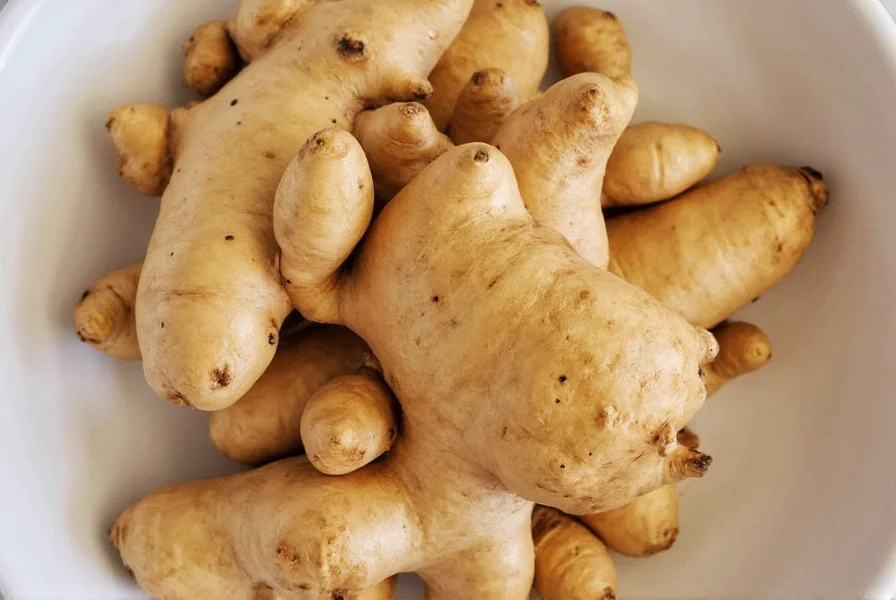Understanding the unique characteristics of Myoga ginger helps distinguish it from more familiar ginger varieties. This perennial plant grows to about 2-3 feet tall and produces striking cone-shaped flower buds that develop into beautiful orchid-like flowers. The edible portions—harvested before the flowers fully open—offer a subtle ginger flavor with citrus and pine notes, making them prized in traditional Japanese dishes.
Botanical Profile and Identification
Scientifically classified as Zingiber mioga, Myoga ginger belongs to the Zingiberaceae family but differs significantly from Zingiber officinale (common ginger). While common ginger's value lies in its underground rhizome, Myoga's culinary value comes from its above-ground parts. The plant features:
- Smooth, reed-like stems growing 60-90 cm tall
- Distinctive pinkish-white flower buds (1.5-2 inches long)
- Young shoots with a pale pink to white coloration
- Leaves that unfurl from tightly rolled sheaths
- Flowers that open into delicate yellow-white blossoms with red markings
The optimal harvesting window for Myoga ginger is critical—buds should be picked when still tightly closed but showing color, typically from late summer through early autumn. Once the flowers fully open, the buds become too fibrous for culinary use.
| Characteristic | Myoga Ginger (Zingiber mioga) | Common Ginger (Zingiber officinale) |
|---|---|---|
| Primary edible part | Flower buds and young shoots | Rhizome (underground stem) |
| Flavor profile | Mild, floral, with citrus notes | Strong, pungent, spicy |
| Plant height | 2-3 feet | 3-4 feet |
| Harvest season | Late summer to early autumn | Winter months |
| Culinary tradition | Japanese cuisine | Global use |
Culinary Applications of Japanese Ginger
Myoga ginger's delicate flavor makes it a versatile ingredient in Japanese cooking, particularly valued for dishes where a strong ginger presence would overwhelm other flavors. Chefs appreciate Myoga ginger flower buds in miso soup as they add subtle warmth without dominating the broth's delicate balance. The thinly sliced buds also serve as an elegant garnish for:
- Cold noodle dishes like zaru soba
- Chawanmushi (savory egg custard)
- Grilled fish preparations
- Summer salads and vinegared dishes
- Tempura (when battered and fried)
Unlike common ginger which often requires peeling and grating, Myoga ginger preparation is simpler—just rinse the buds, trim the base, and slice thinly. The young shoots can be used similarly to scallions. For those exploring how to use Myoga ginger in Western cooking, consider adding it to:
- Seafood salads for a subtle aromatic note
- Cucumber-based cold soups
- Light vinaigrettes and dressings
- Infused in vinegar for pickling

Growing Myoga Ginger Outside Japan
Gardeners interested in growing Myoga ginger in temperate climates should note that this plant prefers partial shade and consistently moist, well-draining soil rich in organic matter. Unlike common ginger which requires tropical conditions, Myoga demonstrates surprising cold tolerance, surviving temperatures down to 0°F (-18°C) when properly mulched.
Planting typically occurs in spring after the last frost using fresh rhizome divisions. The plants benefit from regular watering during the growing season but require reduced moisture during winter dormancy. In USDA zones 7-9, Myoga ginger grows as a reliable perennial, while in colder zones it may need winter protection.
One distinctive feature of Myoga ginger cultivation is that the plant produces edible flower buds without requiring the extensive waiting period needed for common ginger rhizomes to mature. Gardeners can typically harvest their first buds in the plant's second growing season.
Nutritional Profile and Traditional Uses
While comprehensive scientific studies on Myoga ginger's nutritional composition remain limited compared to common ginger, traditional Japanese medicine has valued it for centuries. The plant contains gingerols and shogaols—compounds also found in common ginger—but in different proportions that contribute to its milder flavor profile.
Historically, Japanese herbalists used Myoga ginger for digestive support and to address minor respiratory discomforts. Modern culinary applications focus primarily on its flavor contribution rather than medicinal properties, though ongoing research continues to explore potential health benefits associated with its unique phytochemical composition.

Where to Find Authentic Myoga Ginger
Finding genuine Myoga ginger outside Japan can present challenges, as many markets mistakenly label common ginger varieties as Myoga. True Myoga ginger availability follows seasonal patterns, typically appearing in specialty markets from July through October. Those seeking where to buy Myoga ginger in the United States should check:
- Japanese specialty markets, particularly in summer months
- Farmers' markets in regions with Japanese-American communities
- Online specialty produce retailers (seasonally)
- Gardening catalogs offering rhizomes for cultivation
When selecting Myoga ginger, look for firm, tightly closed buds with vibrant pinkish-white coloration. Avoid specimens with brown spots or signs of opening flowers, as these indicate over-maturity. Properly stored in a damp paper towel inside a perforated plastic bag in the refrigerator, fresh Myoga ginger maintains quality for 7-10 days.











 浙公网安备
33010002000092号
浙公网安备
33010002000092号 浙B2-20120091-4
浙B2-20120091-4